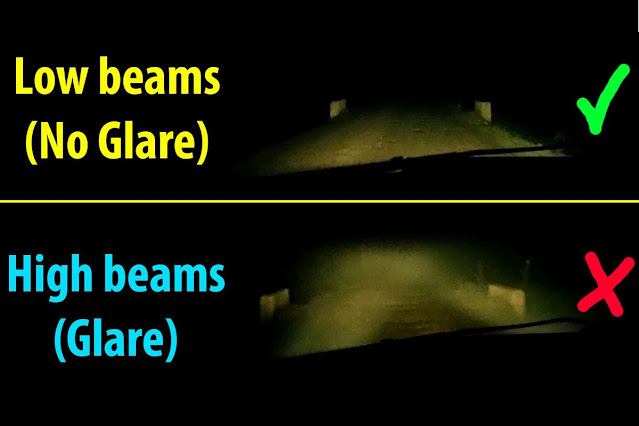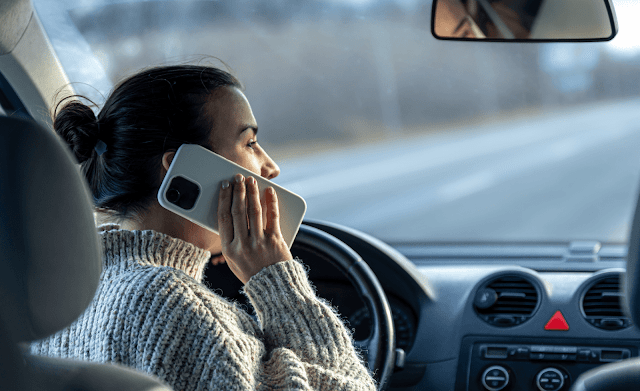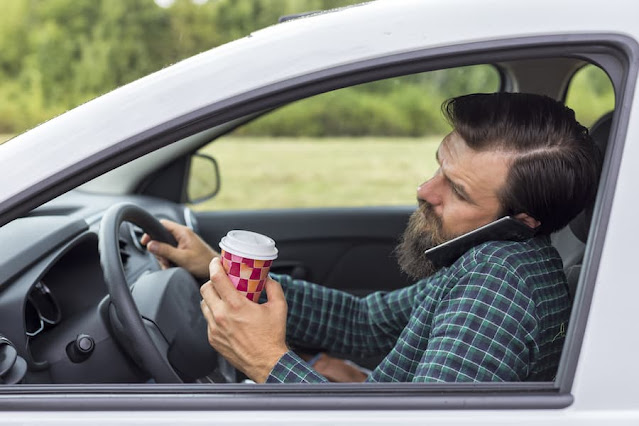Road Safety in India: An In-Depth Look at the Problem and the Urgent Need for Better Safety
Introduction
India, home to one of the world's largest road networks, is also notorious for its alarming rate of road accidents and fatalities. Many people die in road accidents every year and even more are left with permanent harm. Statistics collected by the government indicate that more than 150,000 people lose their lives in India each year due to road accidents. This blog discusses how road safety in India involves various aspects, why its record is poor, and why crucial reforms are needed to address the problem.
1. The Scale of the Problem
India has very few cars compared to the rest of the world, yet it records 10% of all deadly road accidents worldwide. The large difference in numbers points to weaknesses in the infrastructure, enforcement, behaviour and awareness present in society. Some important points about philosophy are:
Over 150,000 people die each year in road accidents.
Each year, more than 500,000 people are injured in accidents relating to trains.
Most of these cases are found in people between the ages of 18 and 35
They indicate that this crisis is also an economic burden, with road accidents draining around 3% from the country’s GDP every year.
2: Causes of Road Accidents in India
1. Human Error
Speeding:
Many road accidents leading to injuries and deaths are caused by people driving too fast. Driving over the speed limit means that the driver reacts more slowly to problems on the road, putting them at higher risk of being involved in a collision. When a vehicle is travelling fast, the chance for serious injury and even death increases for those on two wheels or who are walking and cycling. Additionally, over-speeding reduces a vehicle's stability, increasing the chances of skidding, rollovers, and loss of control.
Driving at high speed lowers a driver’s ability to adapt and act in time to different situations. When a motor vehicle is going much faster than normal, it is harder to stop quickly, so accidents involving pedestrians, strange hazards or changes in the flow of traffic can happen. Because of this delay, cars frequently crash with serious effects, mainly taking place on the highways where people drive fast.
Crashes that happen when drivers go over the speed limit can be very severe. The faster an object is moving, the more force will be involved when it crashes into something. Studies indicate that speeding only slightly increases your chance of a deadly accident to a significant level. An impact at 80 km/h deals far more damage than one at 40 km/h because more energy is transferred in a collision at this rate. Since pedestrians and cyclists do not have much protection, it is very dangerous for them when cars are travelling at high speeds.
Driving too fast often leads to miscontrol of the vehicle, mainly under poor weather or bad road conditions. A wet or bumpy road can make cars or trucks skid and this often causes drivers to lose control. Taking a sharp turn or suddenly stopping at high speeds often results in a rollover, a type of accident that kills many people. When traffic is heavy in the city, speeding more than the limit increases the possibility of collisions from behind and those on the side.
Statistics regarding Over-Speeding in India
More than 2.95 lakh accidents in 2021 were caused by drivers travelling too fast.
The majority of deaths on national highways were caused by speeding.
- Failure to use safety devices (helmets, seat belts) further increased the risk.
Actions to Slow People Down
- Speedway: Using self-monitoring and enforcing tough penalties discourages individuals from speeding.
– Using Speed Governors in Vehicles – Adding speed limiters to all types of vehicles can stop excessive speeding.
- Providing Information About Dangers – To educate drivers, authorities create advertisements and follow through with road programs.
– New Road Designs – Putting in speed bumps, updating signs and supervising intersections keep vehicles moving slowly enough.
Despite continued fast driving, better policing, road improvements and spreading awareness among people, can decrease road accidents in India.
Headlight:
Improper Use of High-Beam Headlights
High-beam headlights are often used wrongly in India which is a big but often missed reason for accidents on the roads, mainly at night. A lot of drivers continue to use their high beams in highly illuminated locations or when being near other cars coming towards them. This practice causes temporary blindness or glare for other drivers, dramatically increasing the risk of head-on collisions.
Why it’s dangerous
Glare Impairment- High beams can temporarily blind oncoming drivers, reducing their ability to judge distance or maintain control.
Pedestrian Risk- Pedestrians are harder to spot when drivers are blinded by high-beam glare.
duo3RhT9QRlr2hw2T5IqTPgEeYw85ZyX2FsiWlxiNZ5AMYYVGKgRKXbBFSstQxMV6bZRbVYMzhhDAcSZn7fcMjXrWW1SOzluRrdcd/s1200/When-to-high-beam-and-low-beam.webp" imageanchor="1" style="margin-left: 1em; margin-right: 1em;">

Two-Wheeler Vulnerability- Riders of motorcycles and scooters are especially susceptible to losing control when confronted with sudden glare.
What needs to change=
Driver Awareness- Most drivers are not trained on when and how to switch between high and low beams.
Clear Signage- Roads should have signage indicating where high-beam usage is restricted.
Strict Enforcement- Fines or penalties for misuse of headlights are rarely enforced but are necessary.
Vehicle Design- Automatic headlight adjustment features can help reduce manual misuse.
If people are informed about headlight use and rule enforcement increases, the number of accidents on roads after sunset can be lowered.
*Drunk Driving:
A lot of road accidents and severe injuries or deaths are caused by drunk driving. Alcohol impairs a driver's ability to make quick decisions, reduces reaction time, and affects coordination, making it extremely hazardous to operate a vehicle under its influence. Drunk driving is still common in many parts of the world, causing a major share of fatal road accidents.
Drunk Driving and its Side Effects
When someone drinks alcohol, the central nervous system is affected, making them slower to react, less capable of sensible judgement and struggling with their skills. If someone drives drunk, they may fail to notice or act upon sudden circumstances or activity by others around them. Because of the longer wait time, the chances of collisions increase, often resulting in accidents where the injuries are either very severe or even lead to death.
Drunk driving results in errors in judgement, since those drivers don’t accurately judge distances, their speed or the nearby traffic. Drunken drivers hardly observe dangers on the road, resulting in accidents and they may behave irresponsibly by running red lights, cutting into another lane or driving in the wrong direction.
Because of alcohol, many people lose their ability to control their vehicles safely while behind the wheel. Swerving, quickly stopping or staying at an uneven speed can all cause accidents. In situations where a driver becomes so drunk that they black out, accidents with life-threatening consequences can happen.
Information about Drunk Driving
Recent news reports that drunk driving causes a significant number of road accidents in India.
Around three-fourths of road accidents in Virudhunagar are the result of drunk motorists.
In Panchkula, strict measures by the police resulted in 102 drivers being fined for drunk driving.
- Many road accidents in Jharkhand are caused by drunk driving, making it one of the top three causes in the state.
Things that Contribute to Drunk Driving
Some drivers are not aware of how much alcohol impairs their driving skills.
Peer Influence – In many social circles, it’s normal to drive after having some drinks, so people keep repeating the offence.
While there are laws, these are not always enforced, allowing criminals to avoid being punished.
Many communities support people deciding to drive drunk because they have few alternatives when getting around.
Feeling Pressured – When in groups, some individuals drink heavily and still choose to drive.
Making Sure Drunk Driving Does Not Happen
Stronger rules for law enforcement, resulting in tougher punishments, could convince people not to drive recklessly.
Education Programmes – Organising events and advertisements to teach drivers the dangers associated with drunk driving.
Breathalyser Checkpoints – Regular police cheques to stop drunk driving, as accidents can be prevented.
Encouraging people to use taxis, ride-sharing and have designated drivers to avoid people driving after drinking.
Making an Impact – Bars and restaurants should encourage responsible drinking among customers and ensure people are safe on the roads.
How Technology Helps to Prevent Drunk Driving
Developments in technology can help bring down the number of drunk driving accidents.
AI in a vehicle can stop someone who has consumed alcohol from driving.
- Systems that prevent anyone who is impaired from driving by requiring a sobriety test.
- Use of devices to constantly monitor traffic which helps identify drivers who are not following the rules and informs the authorities.
- Giving users rewards on data-driven ride-sharing apps if they avoid drinking and driving.
Drunk driving can easily be stopped, but it still results in thousands of deaths. Improving enforcement, informing the public more and using new technologies can help lower accidents by intoxicated drivers. To achieve safe roads, every citizen must be careful and make efforts that protect everyone.
Distracted Driving:
When a driver gets distracted, they may not react in time, increasing their chances of having an
accident. Some people have the habit of using their phone, eating a meal, changing the controls or talking to other people inside the car. According to research, missing eye contact with the road, when travelling in packed or at high speeds, can lead to a deadly collision. This risk can be minimised if laws on phone use behind the wheel are strictly applied, information about the risks is provided to everyone and hands-free technology is used in cars.
Lack of Awareness:
Some drivers, pedestrians and passengers tend to overlook road safety guidelines because they are not aware of them. Because many Indians do not know about traffic rules or the dangers of reckless driving and often forget to use safety gear, accidents can occur. Awareness about road safety has not been stable and lots of people on the roads might not be aware of the basics. Moreover, when regulations are not properly followed, people keep working in dangerous ways. Any effort to improve education programs, inspire safer driving and raise awareness throughout the community can greatly contribute to safer roads and less accidents. 🚗💡
2. Infrastructure Issues
Poor Road Design:
Misdesigned roads are a major reason why accidents occur and place everyone who uses them in harm’s way. In India, many roads suffer from inadequate planning, leading to issues such as blind curves, narrow shoulders, improper lane markings, and poorly banked turns. Due to these issues,
travelling at high speeds becomes difficult which makes crashes more likely. Additionally, faded or missing road signs, lack of pedestrian crossings, and insufficient lighting further exacerbate the problem, making it harder for road users to anticipate dangers.
One of the most dangerous aspects of poor road design is the presence of black spots, which are accident-prone zones where crashes frequently occur due to faulty infrastructure. These areas often have sharp turns, uneven surfaces, and poor drainage, leading to skidding and hydroplaning during heavy rains. Highways, in particular, suffer from improper merging lanes, sudden elevation changes, and inadequate barriers, making them hotspots for severe accidents.
Addressing these issues requires better urban planning, regular road safety audits, and improved engineering standards. Governments must invest in smart traffic management systems, AI-powered monitoring, and enhanced road maintenance to reduce fatalities. Additionally, public awareness campaigns can educate drivers about navigating poorly designed roads safely. Focusing on better infrastructure and implementing tougher safety standards can lead to reduced road accidents for all people in India.
Bad Maintenance:
Poor care of roads is one reason behind many accidents which results in dangerous situations for those who drive, cycle or walk. Poorly maintained roads often feature potholes, uneven surfaces, faded lane markings, and broken traffic signals, all of which increase the risk of collisions. In particular, potholes may result in a car drifting out of control or burst tyres. Additionally, debris on the road, such as fallen branches or discarded tires, forces drivers to make abrupt manoeuvres, increasing the likelihood of crashes.
Another critical issue is poor drainage systems, which result in waterlogging during heavy rains, making roads slippery and dangerous. In regions with extreme weather, crumbling pavement and eroded road edges further compromise vehicle stability. Many accidents occur due to lack of proper signage and road markings, leaving drivers confused about speed limits, turns, or pedestrian crossings.
Studies indicate that road maintenance delays significantly increase accident rates, as deteriorating infrastructure leads to unpredictable driving conditions. Research also highlights that proper road upkeep, including resurfacing and timely repairs, can reduce accident occurrences by up to 30%.
Addressing these issues requires regular road maintenance, timely repairs, and strict quality control measures. Governments must prioritize road safety audits, improved engineering standards, and smart traffic management systems to ensure safer travel conditions. Investing in better infrastructure and proactive maintenance can significantly reduce accidents and enhance overall road safety. 🚦💡
Encroachments:
Many roads in India are being overcrowded which impacts smooth traffic, the safety of pedestrians and makes roads less efficient. When there are illegal structures, sellers by the roadside, unlawful parking and unfinished roadworks, it can cause cars to end up near the curb which increases the chance of accidents. Because of encroachments, people walking in cities are often on the main road, exposing them to the danger of a collision. Besides, blocked views coming from unauthorised structures can lead to areas where drivers cannot see clearly, resulting in more crashes.
One of the most common forms of encroachment is illegal roadside vending, where vendors set up stalls on footpaths and roadsides, obstructing pedestrian movement and forcing people to walk on busy streets. Similarly, unauthorized parking, especially in commercial areas, reduces road space and leads to traffic bottlenecks. In many cities, construction encroachments, such as extended shop fronts or illegal ramps, further contribute to congestion.
When roads are blocked by encroachments, it can delay help from ambulances or fire trucks during an emergency. Because the rules are not strictly carried out and penalties are not strong enough, illegal additions to city areas just continue, causing severe traffic problems. Addressing this issue requires regular inspections, strict legal action, and urban planning reforms to ensure roads remain clear and safe for all users. Additionally, public awareness campaigns can educate citizens on the dangers of encroachments and encourage compliance with regulations. 🚦💡
3. Vehicle Conditions
If vehicles are not maintained well, they are more likely to cause accidents. If brakes, tyres, headlights or the engine are not working properly, accidents may occur while driving. In India, many accidents occur due to overloaded trucks, defective steering systems, and lack of regular vehicle inspections cars that have old safety features can be unsafe, mainly when driving at high speeds.
Impact of Poor Vehicle Conditions
Brake Failure – Malfunctioning brakes reduce stopping power, leading to collisions.
Worn-Out Tires – Bald tires decrease traction, increasing the risk of skidding.
Faulty Headlights and Indicators – Poor visibility at night or in bad weather conditions.
Engine and Steering Malfunctions – Sudden breakdowns can cause accidents, especially on highways.
Solutions to Improve Vehicle Safety
1. **Regular Maintenance Checks** – Ensuring timely servicing of brakes, tires, and lights.
2. **Stricter Vehicle Inspection Laws** – Mandatory fitness tests for commercial and private vehicles.
3. **Enforcing Load Limits** – Preventing overloaded trucks from operating on highways.
4. **Promoting Safer Vehicle Designs** – Encouraging manufacturers to integrate advanced safety features.
4. Overloading
Overloading creates a serious threat on the road, leading to many accidents, damaged vehicles and damaged roads. When vehicles exceed their weight limits, they become less stable, harder to steer, and
take longer to stop, making them dangerous for both the driver and other road users. Overloaded trucks and buses are particularly hazardous, as they can cause brake failures, tire blowouts, and loss of control, leading to severe crashes.
Impact of Overloading on Road Safety
- Reduced Vehicle Stability – Excess weight shifts the vehicle’s centre of gravity, increasing the risk of rollovers.
- Brake Failures – Overloaded vehicles require more braking force, leading to overheating and reduced effectiveness.
- Increased Tire Wear – Excessive load causes tires to overheat and wear out faster, increasing the risk of blowouts.
- Damage to Road Infrastructure– Overloaded trucks accelerate road deterioration, leading to potholes and weakened bridges.
- Higher Fatality Rates – Accidents involving overloaded vehicles tend to be more severe due to the increased impact force.
Statistics on Overloading and Accidents
In India, trucks that carry too much weight cause many accidents on the same highways.
- Studies show that overloaded vehicles are 12.3% more likely to be involved in fatal crashes.
- If truckloads are not tightly controlled, drivers continue to overload their vehicles, leading to deteriorating roads and more accidents.
Solutions to Prevent Overloading
1. Stricter Weight Regulations– Enforcing legal load limits and penalizing violators.
2. Weigh Stations and Automated Monitoring – Installing checkpoints to detect overloaded vehicles.
3. Public Awareness Campaigns – Educating transport operators on the dangers of overloading.
4. Improved Road Engineering – Strengthening highways and bridges to withstand heavy loads.
5. Enforcement Gaps
There are many accidents in India because road safety regulations are not always followed. Despite existing traffic laws, weak implementation, corruption, and lack of surveillance allow violations such as over-speeding, drunk driving, and failure to wear helmets or seatbelts to persist. Many offenders escape penalties due to poor monitoring systems and inconsistent law enforcement, leading to repeated violations. Additionally, insufficient police personnel and outdated traffic management infrastructure make it difficult to ensure compliance with safety regulations.
A detailed analysis of India's road safety crisis reveals that over 15.3 lakh fatalities have occurred in road crashes over the past decade, highlighting systemic enforcement failures. The country reports a road death rate of 250 per 10,000 km, significantly higher than the rates in the United States (57), China (119), and Australia (11). Because of this, it is clear that we need to crack down and update our infrastructure.
One of the biggest challenges is the lack of automated surveillance systems, which makes it difficult to track violations effectively. Developed nations use AI-powered traffic monitoring, automated speed detection, and digital penalty systems, ensuring that offenders are held accountable. In contrast, this duty is mainly performed by hand in India which can lead to obvious mistakes and bribery.
To bridge these enforcement gaps, authorities must implement automated traffic monitoring, stricter penalties, and better coordination between law enforcement agencies. Additionally, public awareness campaigns and community-driven initiatives can encourage compliance with road safety regulations. If we get better at enforcing the rules, the number of accidents would decrease and driving standards would rise throughout the country.
Studying high-risk areas and groups is crucial when trying to understand the main issues in Indian road safety. Young adults, particularly those aged 15-29, constitute over 50% of all road fatalities, making them the most vulnerable demographic. It’s common for accidents to happen to young drivers, mainly because of their risky actions, inexperience and straying while driving.
Two-wheeler riders account for the highest number of deaths, with nearly half of all road accident fatalities involving motorcyclists. Failure to use helmets, driving carelessly and unsafe roads increase the chances of them having accidents.
Pedestrians and cyclists often face significant risks due to inadequate road planning. In many urban regions, pedestrians and cyclists have to move along paths with cars and trucks. For this reason, accidents occur more often, especially when cities become crowded.
The urban vs. rural divide in road safety is stark. Rural roads see more fatalities due to poor infrastructure, lack of proper signage, and slower emergency response times. Not surprisingly, highways that pass by rural areas experience more accidents because of people driving at high speed and the awkward visibility.
Addressing these risks requires targeted safety measures, improved infrastructure, and stricter enforcement of traffic laws to protect vulnerable road users. 🚦💡
6. High-Risk Groups and Areas
Studying high-risk areas and groups is crucial when trying to understand the main issues in Indian road safety. Young adults, particularly those aged 15-29, constitute over 50% of all road fatalities, making them the most vulnerable demographic. It’s common for accidents to happen to young drivers, mainly because of their risky actions, inexperience and straying while driving.
Two-wheeler ridersaccount for the highest number of deaths, with nearly half of all road accident fatalities involving motorcyclists. Failure to use helmets, driving carelessly and unsafe roads increase the chances of them having accidents.
Pedestrians and cyclists often face significant risks due to inadequate road planning. In many urban regions, pedestrians and cyclists have to move along paths with cars and trucks. For this reason, accidents occur more often, especially when cities become crowded.
The urban vs. rural divide in road safety is stark. Rural roads see more fatalities due to poor infrastructure, lack of proper signage, and slower emergency response times. Not surprisingly, highways that pass by rural areas experience more accidents because of people driving at high speed and the awkward visibility.
Addressing these risks requires targeted safety measures, improved infrastructure, and stricter enforcement of traffic laws to protect vulnerable road users. 🚦💡
7. Government Initiatives
Even though addressing road safety is a priority for the government, following through with these programmes is a problem as their implementation varies across states.
. The Motor Vehicles (Amendment) Act, 2019
The Act introduced stricter penalties for traffic violations, significantly increasing fines for offenses like drunk driving, over-speeding, and reckless driving. It also made the use of helmets and seatbelts mandatory, aiming to reduce fatalities among two-wheeler riders and passengers. Additionally, it provided legal protection for Good Samaritans, ensuring that those who assist accident victims do not face legal harassment, encouraging timely medical intervention.
National Road Safety Policy
This policy focuses on awareness campaigns, improved infrastructure, and better post-accident care. It promotes safer road designs, enhanced emergency medical response systems, and education programs to instil responsible driving habits. Yet, these strategies do not work as well as they could because there is not enough unity between the federal and state governments.
8. Digital Enforcement
To combat violations, authorities have invested in speed cameras, red light cameras, and automated e-challan systems for improved traffic monitoring. Thanks to these tools, detecting compliance issues happens quickly and automatically, reducing the need for human intervention. Yet, since there are gaps in how laws are enforced, many problems involving abuse of power and old systems persist.
While these initiatives mark progress, their implementation remains inconsistent, with certain states lagging in enforcement due to resource constraints and political hurdles. Better coordination, using laws equally in all states and relying more on technology may help reduce these dangers and promote road safety countrywide.



.jpeg)















No comments:
Post a Comment